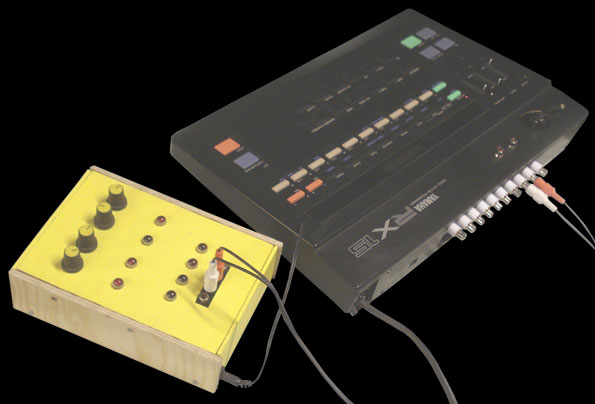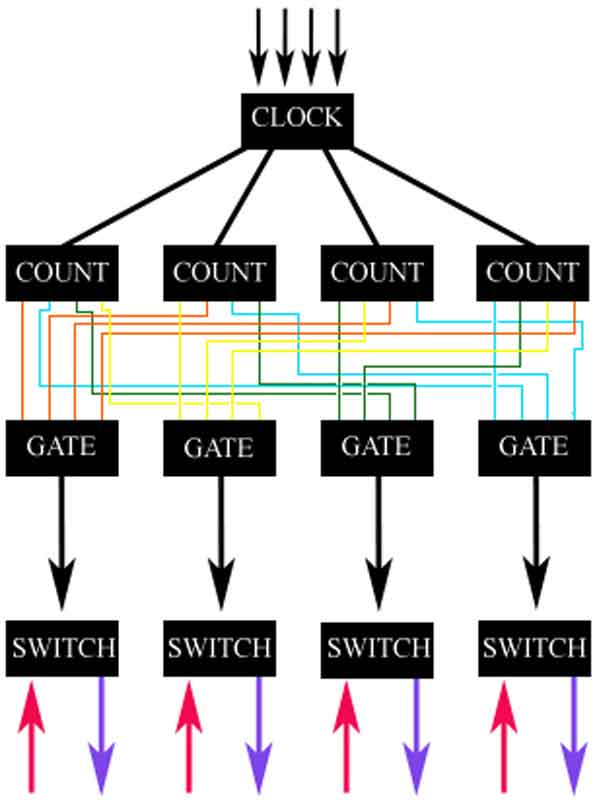 |
 |
 |
 |
 |
 |



 |
 |
|
The Raindrops Modul is a random generator. Its output reminds me on a slightly fall of raindrops. The module can generate 4 independend impulses. These impulses close and open 4 gates. As example I use it to remotely control the pads of a Yamaha RX15 drum machine. A impuls generator consists of a clock generator, a binary counter, 3 AND gates and finally a switch. Each clock generator drives a binary counter. The speed of the clock can be set by a dial. The binary counter divides an incomming clock or signal like this: output 1: Clock divided by 2 output 2: Clock divided by 4 output 3: Clock divided by 8 output 4: Clock divided by 16 The first output of the binary counter of line 1 takes control over one input of the first gate of line 1, changing its state continously from high to low (1/0). The second output of the binary counter of line 2 takes control over the other input of the first gate, changing its state continously from high to low (1/0). But on a different timebase. If it happens that both Inputs show a high state the same time, than the output of the gate also shows a high state. This output of the first gate feeds the one input of the second gate of the line 1. The third output of the binary counter of line 3 feeds the other input of the second gate of line 1. Again if high states are seen at both inputs of the second gate, the signal is passing through the second gate. The output of the second gate feeds one input of the third gate and the fourth output of the binary counter of line 4 controls the other input of gate number three of line 1. As bevor, the signal only can pass the gate if both its inputs show a high state. Because all binary counters have a different clock speed, it is unpredictable when a signal will pass through all three gates. This is repeated for the other three lines the same way. Take a look at the schematic for a better understanding. |
 |
 |

 |
 |
 |
 |
 |
 |